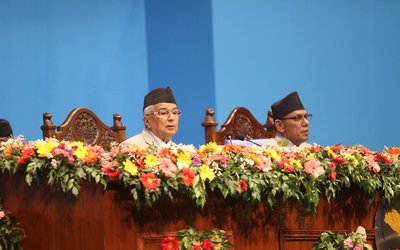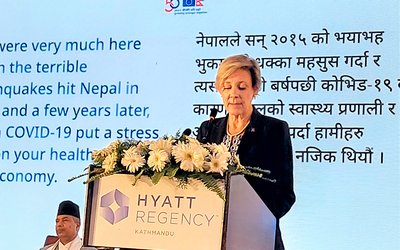
In what has been termed as the most serious impasse since the 1962 Sino-India war, India and China are now locked in a border dispute in the Sikkim region.
The trouble started when China, as alleged by the Indian side, bulldozed an old bunker of the Indian army at the tri-junction of India, China and Bhutan known as the Doka La or Donglong area, where India had earlier objected to the road that China was building. The Chinese claimed that they were constructing the road within their territory, which led to jostling between the two sides and demolition of the bunker. China later showed maps claiming that the tri-juncture region was entirely its own and had been so historically.
What followed was a war of words between the two sides, which has shown no signs of slowing down. China's military chief urged India to ‘learn historical lessons’ reminding New Delhi of its bitter defeat in the 1962 war. "There could be a chance of war if the recent conflict between China and India is not handled properly. China will resolutely defend its territory and safeguard the border," a Global Times commentary said. Another news editorial published in the same newspaper warned India to ‘mend its ways’, adding that New Delhi was mistaken if it thought it can afford a ‘showdown’ with Beijing on the border.
While initially maintaining a silence, the Indian response slowly turned aggressive too. In response to Beijing’s warnings, India’s Finance Minister, Arun Jaitley stated that India is not what it was in 1962 anymore. Just earlier this week, India even pushed in more troops in a ‘non-combative mode’ in the area to strengthen its position.
Defense experts have stated that the reason behind China’s claim to the area is to exert its dominance over the Chumbi Valley, which is a part of the southern reaches of Tibet. By claiming the Doka La area, experts claim, Beijing wants to maximise its geographical advantage so that it can monitor all movements along the India-Bhutan border.
But it is not just that. The skirmish in the India-China border is also China’s attempts to show its hegemonic position in the area. The tussle at Sikkim border is not new. Thanks to China’s aggressive stance at times, in the past few years both the countries have been engaged in a number of border disputes, especially in the Arunachal Pradesh area and the Line of Actual Control (LAC) – Ladakh area. While the Indian side accuses China of illegally trespassing its area, China maintains that many of those areas had ‘historically been theirs’.
Beijing’s move also comes at a time when the Indian Prime Minister has been meeting other world leaders like US President Donald Trump and the Russian President Vladmir Putin, which as seen by commentaries in the Chinese state media, has irked the Chinese side. It’s high handedness in the Doka La area is also a show of strength targeted not just to Modi but also to the other two world leaders. In the sidelines of Modi’s meeting with Trump and Putin, the Global Times, went down memory lane to narrate how India ‘isn’t able to balance China’ and that whenever the US or the Soviet Union ‘played the India card to check China’, it boomeranged on India. In typical condescending tone, China advised India to ‘learn from historical lessons’ and ‘correct its errors’, alluding to the defeat in the 1962 war when neither the US nor the USSR came to New Delhi’s rescue. Although Chinese leader Xi Jinping and Donald Trump started out on a good note, with Modi’s growing closeness to the US President and their explicit demand that Pakistan (a long time ally of China) ‘ensure that its territory is not used to launch terrorist attacks on other countries’ was deemed as indirect blows to Beijing.
Although chances of a full scale war erupting is less likely, it remains to be seen how the two sides resolve the dispute diplomatically at a time when China is moving aggressively in the South Asian region with the Belt and Road Initiative (BRI) framework.
- Ukrainian Crisis And The World (Dis)Order
- Apr 22, 2022
- China’s Cautious Steps In The Graveyard Of Empires
- Aug 18, 2021
- Foreign Aid On The Fence!
- Aug 08, 2021
- Communist Party of China centenary celebrations Reading between the lips
- Jul 14, 2021
- Second Wave Of Covid-19 In India: Deadly Blow To The Economy
- Jun 23, 2021

















